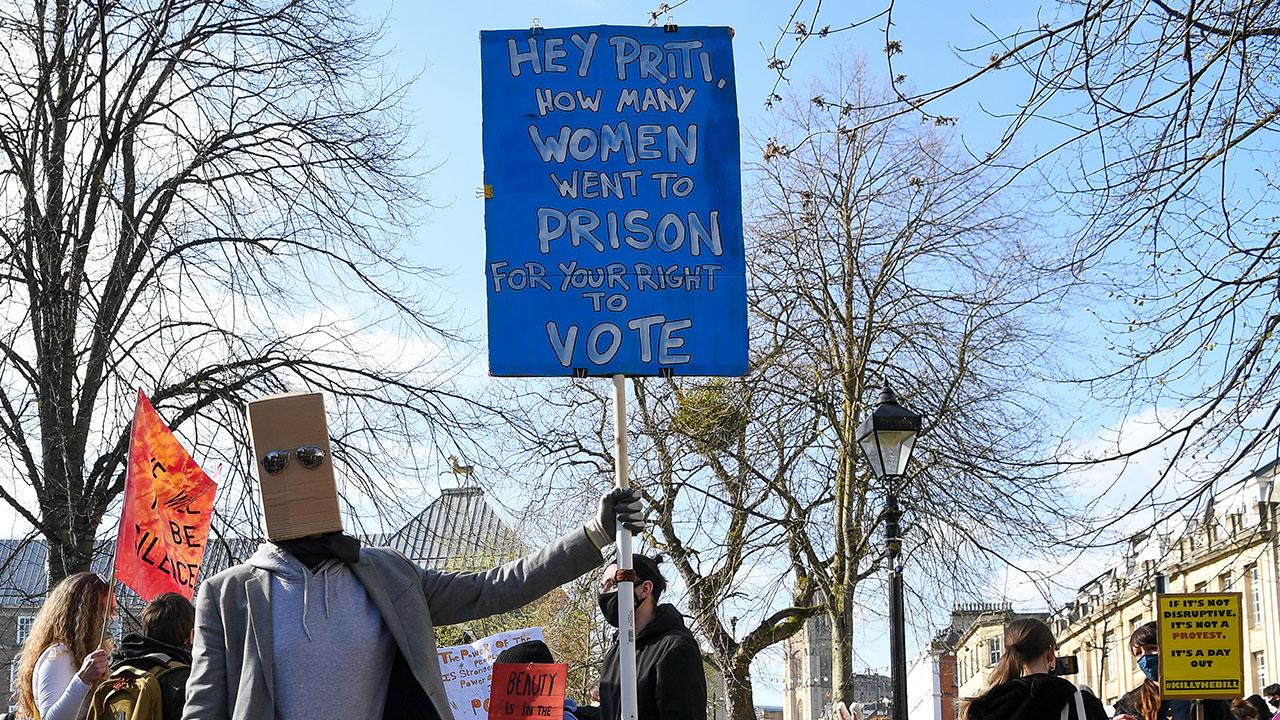Stand Up
One woman’s protest in Damascus
One woman’s protest in Damascus

On a Sunday afternoon in early April, a 33-year-old woman named Rima Dali put on a paint-splattered red dress over a pair of jeans and walked into the middle of a busy intersection near the Syrian parliament building in Damascus. She held a thin red scarf, daubed with: ‘Stop the killing. We want to build a nation for all Syrians.’ Dali, who volunteers for the Red Crescent and works in community development, turned slow pirouettes as cars inched and swerved and honked around her. A crowd of people, mostly women, clapped and whistled and shouted: ‘Bravo!’ In the year since the uprising in Syria began, Dali had already been arrested once and, on 8 April, she was arrested again. She was released a few days later, but by then she had set off a chain reaction: more banners, more arrests, more activists missing. Some 10,000 people have been killed in Syria over 13 months of protests, and tens of thousands more have been imprisoned.
Dali is not, to my knowledge, an artist, nor was her action staged as an art work. Nevertheless, it possessed nearly all of the elements that combine to make art a vital, incomparable thing: it was emotionally charged, intellectually succinct, unabashedly political, formally precise and staggeringly brave. There was more at stake for Dali in a minute than most artists are likely to face in a lifetime. The wobbly video posted online of this tiny figure negotiating traffic with the delicacy of a bullfighter is as enchanting as it is haunting.
The story and the visual record of what Dali had done circulated quickly among a group of artists in Beirut, where the Syrian crisis is followed with a fevered obsession. The main reason for this is a tangled knot of hope, fear, history and proximity. Syria occupied Lebanon in all but name for 30 years. Of the 17,000 people who went missing during the civil war, at least a thousand are thought to have disappeared into Syrian prisons. The Lebanese government may be ineffectual and corrupt, but the Syrian regime is despotic and perverse.
But none of this explains why artists, in particular, have been so gripped by the situation, or why they have been collecting huge caches of audio-visual material from Syria. Rabih Mroué, Ali Cherri and Raed Yassin have sorted through and synthesized some of the sounds, images and videos they have gathered to create new works that question the efficacy and ambiguity of such material. Mroué’s The Pixelated Revolution (2011), a lecture/performance that was first staged in Beirut as a work-in-progress in December, applies the Danish filmmaking manifesto Dogme 95 to a series of videos Syrian activists have been uploading on YouTube, including videos of activists being shot and killed.
Cherri’s Pipe Dreams (2011) weaves together two seemingly incongruous strands. The first is archival footage of a phone call that took place 25 years ago between the late Syrian president Hafez al-Assad and the first Syrian astronaut Muhammed Faris. The second is a more recent video showing a team of workers dismantling a statue of Assad to protect it from vandalism by angry demonstrators.
Yassin’s There Is No Arab Spring; It’s All Photoshop (2012), a lecture/ performance that was commissioned by Rotterdam’s International Film Festival in January, turns the tables on an invitation to address current events through artistic means. The artist’s illustrated talk moves deftly from his love of Egyptian cinema to the strange footage of Syrians protesting in the privacy of their own homes to the songs of Ibrahim Qashoush, who wrote the initial anthems of the uprising before being murdered last July; his voice box was cut from his throat and sent to his family as a warning.
Last June, the writer Jon Rich contributed a fascinating essay to e-flux journal, in which he credited the insurrection in Syria with giving rise to the ‘image-event’, an update of sorts of Susan Sontag’s ‘image-world’ in her book of essays, On Photography (1977). Because the media has been effectively shut down, everything coming out of Syria is amateur – video footage shot on mobile phones by photographers who are protesters, Rich writes, by protestors who are historians, and by historians who are both the victims of repression and the heroes of the revolution they are trying to create. Taking the image is no longer about recording the event – it’s become one with staging the revolt. The image – crude, playful, devastating, clever – is the uprising itself in Syria.
This March, curator Rasha Salti gave a talk titled ‘Shall We Dance?’ at the Marrakech Biennale which reflected on Syria’s wealth of graffiti, stencils, posters, animations, shadow puppet plays and videos of people dancing the dabke in plain sight of army tanks and snipers. What organizing principles should be applied to such an archive, she asked, and is there an ethical dimension to keeping this material from migrating uncritically into museums that are over-eager for the attractions of the so-called Arab spring? ‘Rarely has watching a live political event been so empowering,’ she said. Watching Dali, one could add, rarely has it seemed so precarious, either.
























